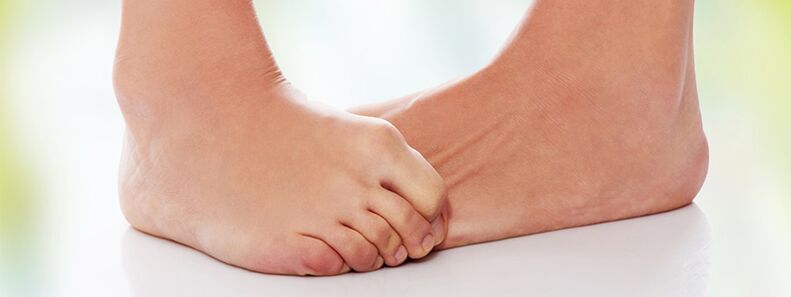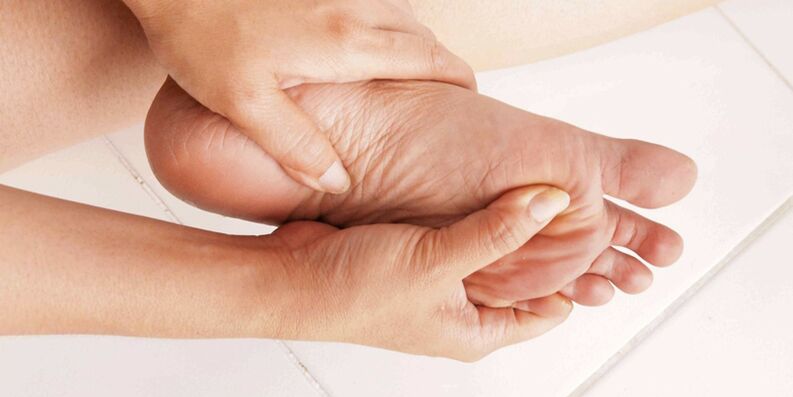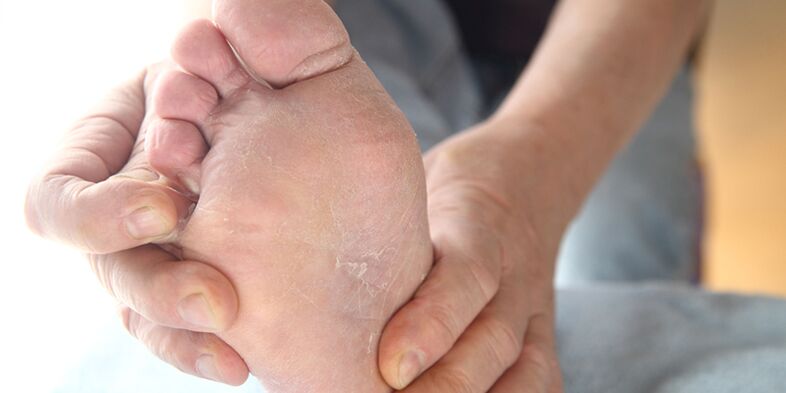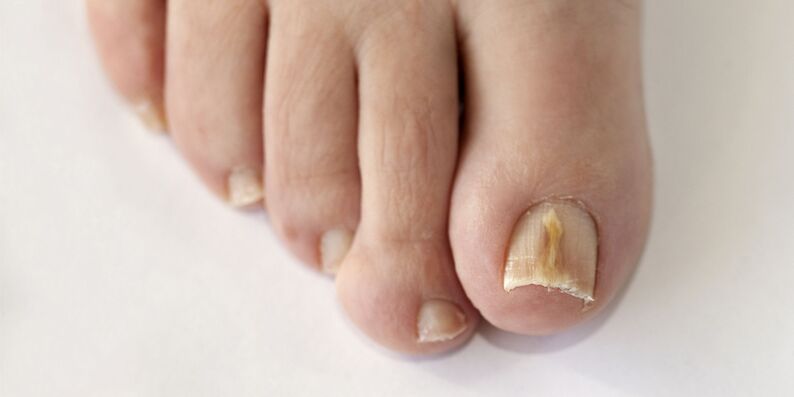
Onychomycosis is one of the most unpleasant and sudden diseases. Some are treated for years, some - only a few months. Why is that? The reason for this is an important rule: if the symptoms of nail fungus are detected at an early stage, your time for treatment will be significantly reduced.
Unfortunately, not everyone can recognize it immediately after infection. Fungal spores gradually "fill" the area of human skin, so you should pay attention to the slightest suspicious changes that occur on the skin and nails, so as not to miss the first signs of this disease.

Causes and symptoms of fungal infections of the feet
Few people examine their feet every day. Often, not everyone can recognize the nail fungus, because different types of spores can live on the surface of the skin for a long time without showing themselves in any way. For example, Candida fungi are usually found on everyone's feet. We are talking about the conditionally pathogenic flora that causes the development of the disease under certain unfavorable conditions. What can serve as a boost to the appearance of a mushroom?
- Immune deficiency conditions (oncological diseases, congenital pathologies, autoimmune diseases, AIDS, hepatitis and others).
- Diabetes. Diabetic foot is more affected by fungi and bacteria due to impaired blood flow, as well as the formation of ulcers and incurable wounds.
- Hyperhidrosis or excessive sweating of the skin. Because nail fungus feels so good in a humid and hot environment, it is not difficult to recognize it on the skin of a person who suffers from excessive sweating.
- Endocrine diseases.
Onychomycosis is very easy to infect, for example, in a swimming pool, sauna or gym. Fungal spores can be located on the skin where there are cracks, wounds and injuries. It is important to make a diagnosis at the first manifestation of the disease, because the outcome of treatment depends on it. Conventionally, onychomycosis can be divided into several stages, each with a number of symptoms.
- Initial stage: the skin on the legs is a little itchy and cracked, as we are used to seeing in the photo, the external manifestations of the fungus are generally absent. You can feel unusually dry skin, there is nothing else.
- The next stage is characterized by the appearance of red spots or whitish plaque on the skin of the foot and between the toes. It all depends on the type of fungus that affects your feet. The spots come in a variety of sizes and are generally well defined with paid borders. The white coating resembles powder or flour.
- In addition, fluid begins to form bubbles in the legs, they are unevenly distributed on the surface of the skin and explode over time. Burst foam forms an ulcer that does not heal for a long time.
- In one of the last stages, it is possible to identify the fungus on the nail, because the changes in the nail plate often begin after the appearance of itchy skin and ulcers. The nail is noticeably thicker. You can see how much it is crusted and the free edge is broken. The color of the nail plate also changes: yellow-green, brown or even black. It separates from the nail bed, exposing it.

Onychomycosis detected: what to do?
If you see the above manifestations in the feet, you should immediately visit a dermatologist, a mycologist - a fungal or a podologist (a doctor who deals with foot and nail problems). If unsuccessful, you will be given an analysis for nail fungus to learn its type and degree of infection. Onychomycosis often occurs when the foot is affected by fungi:
- Trichophytos,
- Dermatophytes,
- Spores of the genus Candida.
If the initial stage of nail fungus is characterized by only a few small signs and is localized in only one of the feet, as you can see in the photo, you are lucky.

Most likely, the doctor will prescribe a standard treatment regimen with antifungal drugs that effectively kill the fungus.
It is recommended to use ointments, creams, sprays and special nail polishes for therapy.
Unfortunately, sometimes a person sees the appearance of nail fungus long after the initial stage.

You can easily tell from the photo that the disease is ongoing: Marigold is deformed, peels and discolors the nail bed, deep and painful cracks appear between the toes, and both feet are affected by the fungus. In this case, antibiotic therapy, treatment with immunostimulatory and antiallergic drugs and vitamins will help. You can complete the complex therapy with traditional medical recipes: herbal solutions, baths with sea salt and soda, treatment with vinegar solution, applications with garlic, lard and other substances.
In the most extreme cases, marigold affected by onychomycosis is surgically removed or cut using a special milling cutter in the office of a pedicurist (podologist).
Now you know how the foot fungus manifests itself, the reasons for its formation and how to deal with it. We hope you found this information useful.

























